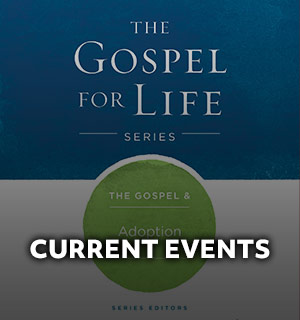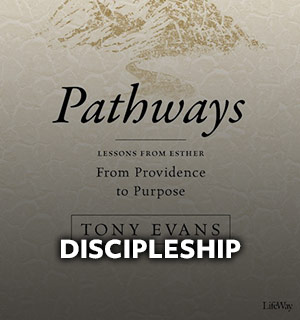
Human dignity isn’t just a concept for adults but one we should teach our kids. They need a robust theology of the imago Dei.
By Daniel Darling
One of the most important truths we learn from Scripture—at the beginning of the book—is human beings are not random collections of cells but were made with care and precision by a loving Creator. While God spoke the rest of creation into existence by His word, the triune God lovingly crafted humans and gave them the breath of life. Only human beings were made in the image of God.
This is such a precious truth—one that has implications for how we see ourselves and the world. Being an image-bearer of the Almighty means we are not captains of our own souls or masters of our own fates. The one who fashioned us, who knit us in our mother’s wombs, knows what is best for our flourishing. Our neighbors, whether online or in person, are not obstacles to our success or avatars for our arguing pleasure. They are whole people who bear the reflection of the divine. And only Jesus, who is the image of the invisible God, redeems us from our sinful tendency to turn against other image-bearers.
Human dignity isn’t just a concept for adults but one we should teach our kids from the earliest ages. They need this worldview to help them process a world broken by sin, violence, and suffering. They need a theology robust enough to help them know how to interact with their friends.
How do we do this? Here are six ways to teach human dignity to kids:
1. Read Scripture with them as a family
Even if your kids are attending church or Vacation Bible School or getting a Christian education, it’s important for families to read the Bible together. Kids need to see that Scripture is the basis for your faith, you value what God has said, and your home is based on unchanging truth. When it comes to human dignity, families should read passages such as Genesis 1 and 2 and Psalm 139 and ask important questions about what these words mean. Families should consider memorizing these and other Scriptures to hide God’s word in the hearts of children forever.
“Kids need to see that Scripture is the basis for your faith, you value what God has said, and your home is based on unchanging truth.” — @DanDarling Click To Tweet2. Apply the truth of human dignity in life situations
Some of the best opportunities to teach are in real-life situations that arise. Does anyone in your family or circle of friends have a disability? As a family, talk through what this means and how you, as a follower of Jesus, should view them. Dignity and worth are not dependent on our performance or usefulness. They’re dependent on our status as image-bearers, which is not diminished by the fall or lessened by disability. Is there someone in your child’s life with whom they have a hard time getting along? This is an opportunity to demonstrate a dependence on God’s Spirit to love this difficult person—not because your child particularly likes them, but because that person is a human with dignity and worth. And help your children consider what their status as image-bearers communicates to them about the way they think about themselves and their self-worth.
3. Model human dignity in the way you interact with other people
This will challenge and test you the most. Our kids easily pick up on the way we think about others. Do we disparage folks we don’t like and dehumanize them in our conversations? Do we allow ourselves to look at certain populations and describe them in dehumanizing terms? If we do this, our kids will certainly pick up this habit. However, if we model Christ-like kindness and treat everyone with dignity, our children will also catch this. You might say you believe Genesis 1 or Psalm 139, but the real test is in how you apply it. You might say you value human life, but how do you treat those who cannot advance your life in any meaningful way?
4. Talk through issues in the news as they are age appropriate and suitable
Your kids can’t and shouldn’t be glued to the news, nor should you. But the headlines can occasionally be teaching tools to help you teach your kids about living out a biblical worldview. When issues like abortion or euthanasia arise, they could be opportunities to teach your kids about the imago Dei. When racial tensions flare, this is an opportunity to talk about the image of God. And when moments on the calendar give you opportunity—Sanctity of Life Sunday, MLK Day, or important anniversaries of key events in American and world history—take time and teach your kids about what is right.
“Parents have an obligation to teach what Scripture says about the value of human life and about our responsibility before our Creator, both intentionally and by example.” — @DanDarling Click To Tweet5. Point your kids to resources that help shape their thinking on the imago Dei
As parents, you can curate what influences your children. You can introduce them to movies, books, audio series, and other content that can help shape the way they see the world. Introduce your kids to the civil rights movement and the speeches of Martin Luther King and Frederick Douglas. Show them documentaries, movies, and biographies of heroes like William Wilberforce, William Booth, Harriet Tubman, and Abraham Lincoln.
6. Find moments in pop culture that provide opportunities to talk about human dignity
Sometimes a scene in a movie, a popular song, or a novel can prompt important conversations about the value of human life. These may be positive reinforcements of what Scripture says or they may reveal values inconsistent with Scripture. Still, they can allow parents to pause and ask questions, such as: “What does this scene tell us about the way life is sometimes devalued? How do you think this character thought about the value of this other character’s life? How can the gospel restore this broken situation?”
Parents have an obligation to teach what Scripture says about the value of human life and about our responsibility before our Creator, both intentionally and by example. Teaching our kids this worldview will help equip them to live out the gospel and live as healing agents in a broken world.
For permission to republish this article, contact Marissa Postell Sullivan.

Dan Darling
Dan is the director of the Land Center for Cultural Engagement at Southwestern Seminary. He is the bestselling author of several books, including Agents of Grace.







